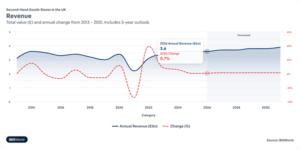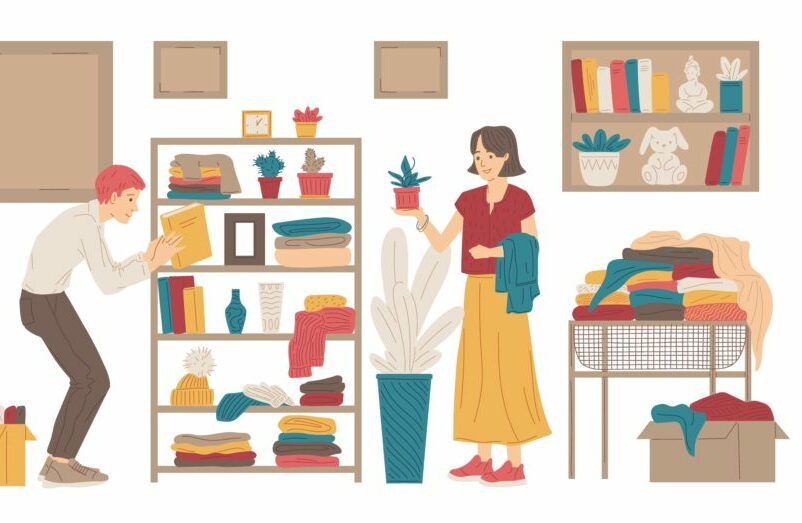Eco-conscious consumers are driving growth in second-hand goods, favouring sustainability for fashion. Coupled with the cost-of-living crisis, many individuals favour pre-owned goods at cheaper prices over new ones with a higher price tag.

What does this mean for charity shops?
Although the overall industry is growing, much of this is in the online marketplace. Consumers are choosing to sell clothes on platforms such as Vinted and Depop to make money off their unwanted items rather than donating to charity shops. Facebook marketplace is becoming more commonly used for selling pre-loved furniture and larger items.
Established retailers also promote sustainability by offering discount vouchers for people to return unwanted clothes.
All this is creating competition, fewer donations and less stock for charities.
How to combat the competition
Charities need to find innovative ways to follow the trends in the market and appeal to the increasing number of millennials buying second-hand goods. Here are a few ways to combat the competition.
- Online presence selling goods on platforms like eBay will reach a wider audience.
- Develop a loyal customer base and understand customer’s desires for unique, pre-loved, affordable items.
- Develop a strong market profile to increase visibility and credibility.
- Differentiate yourself from similar offerings and create your own brand to become the retail shop of choice for consumers.
- Establish efficient processes for stock management and distribution channels.
- Use advances in technology such as AI to automate admin processes and analyse purchasing behaviours.
- Operate in a high footfall location to attract donations as well as customers.
- Ensure car parking for those retail outlets selling larger, heavier items. Alternatively, offer a delivery service.
Final food for thought
Some larger charities have explored new ways to maximise their market presence. Could similar ideas at a local level be viable options?
- Barnardos Children’s Charity in London partnered with Amazon to open a Second Chance Store. Pre-loved goods donated to Amazon were sold to consumers, and all the profits went to Barnardo’s.
- Oxfam partnered with Vinted to feature pre-loved clothing on the Vinted app. This collaboration allowed Oxfam to reach a larger demographic of tech-savvy and sustainability-conscious individuals.
- The UK Youth’s Summer Jobs Programme funds young individuals to participate in paid employment. Their salary costs and on-costs are fully funded by the programme funders and, therefore, can be a vital resource to address labour shortages.
Summary
Revenue generated by second-hand stores is expected to rise at a compound annual growth rate of 1.3% over the five years to 2030–31, reaching an estimated £3.9 billion. The appeal of sustainable shopping and fashion-forward choices continues to draw consumers to pre-owned goods. As Generation Z’s income levels grow, their influence on the market is set to expand, positioning them as a key driving force behind the ongoing boom in second-hand retail.



